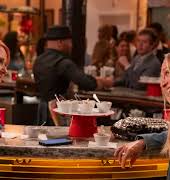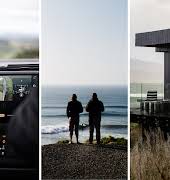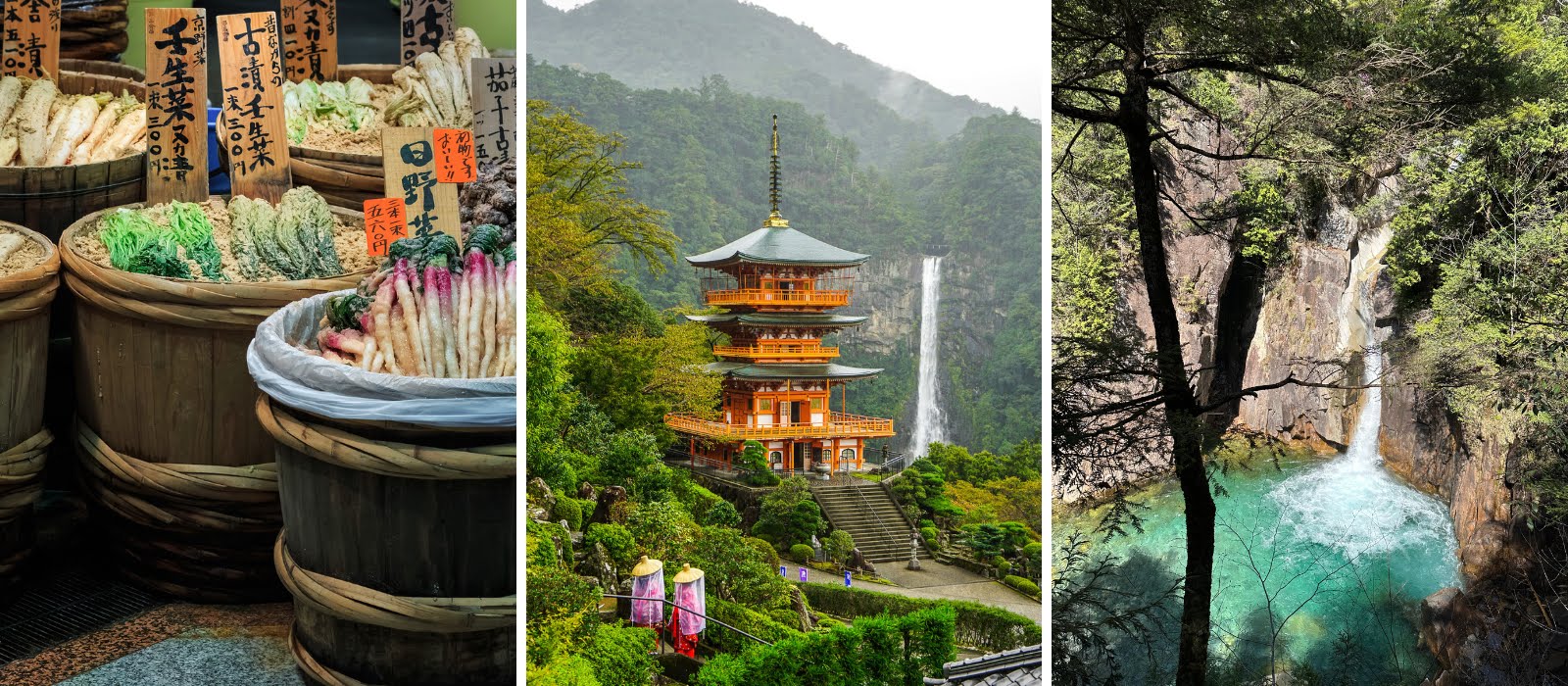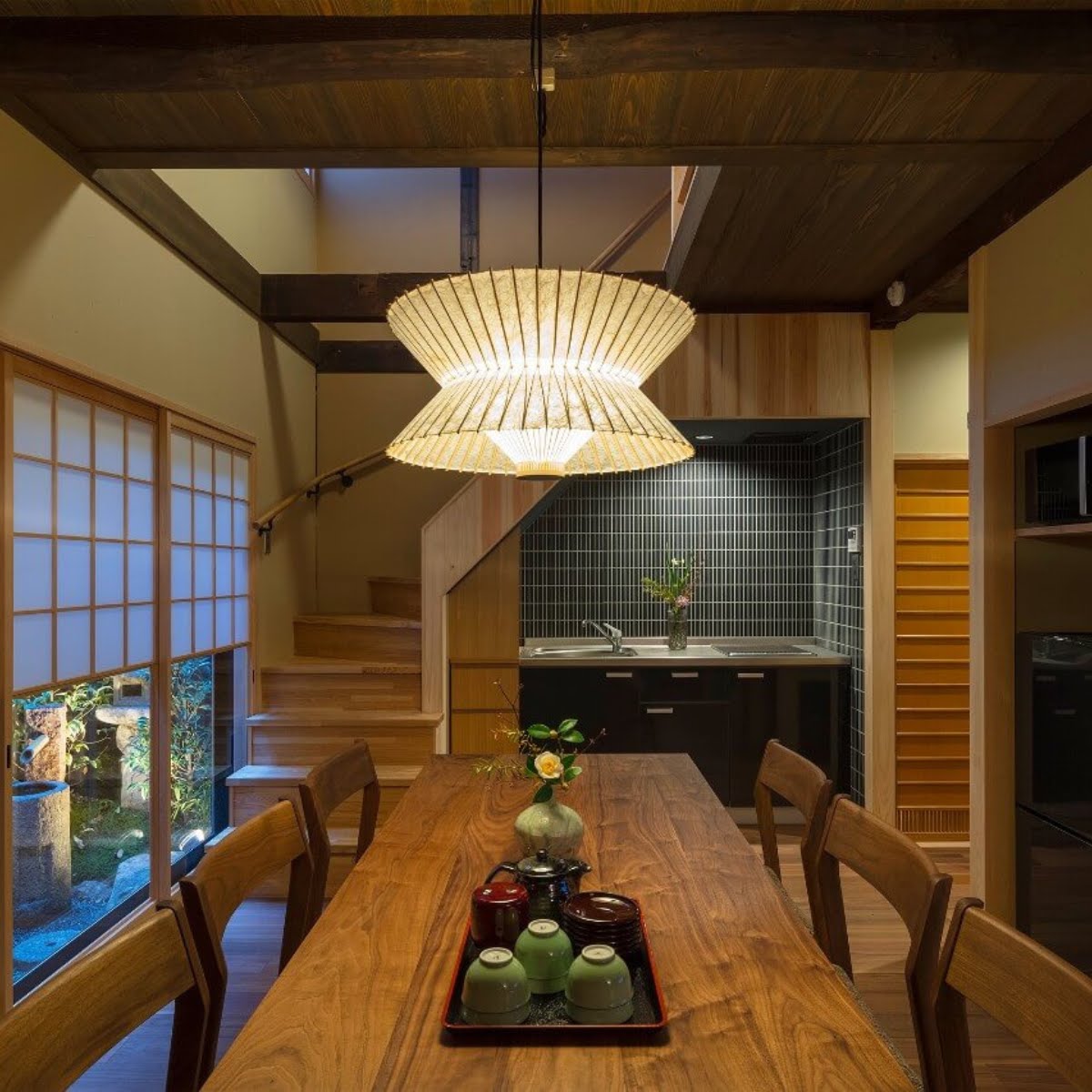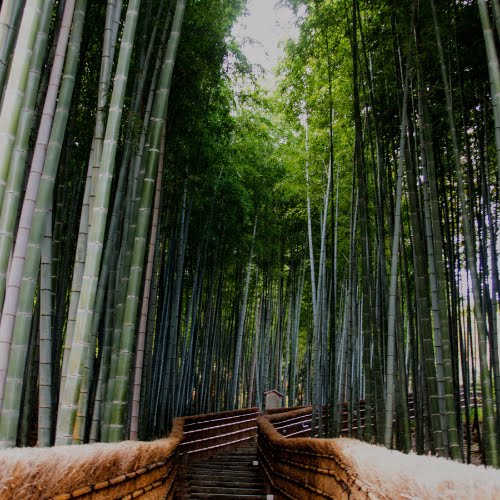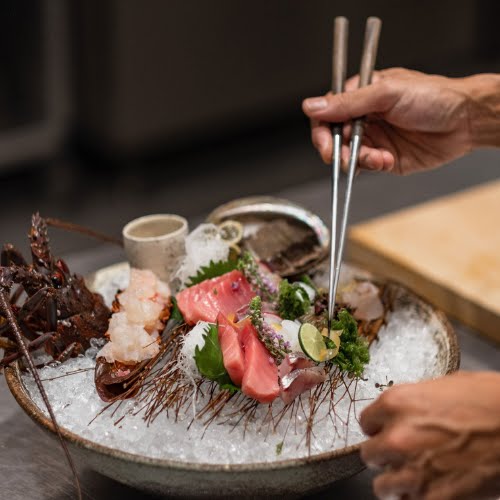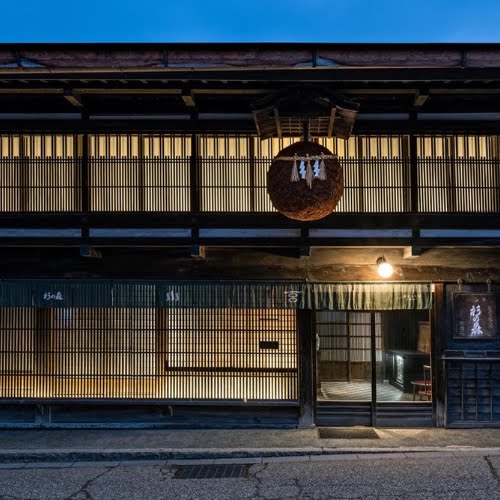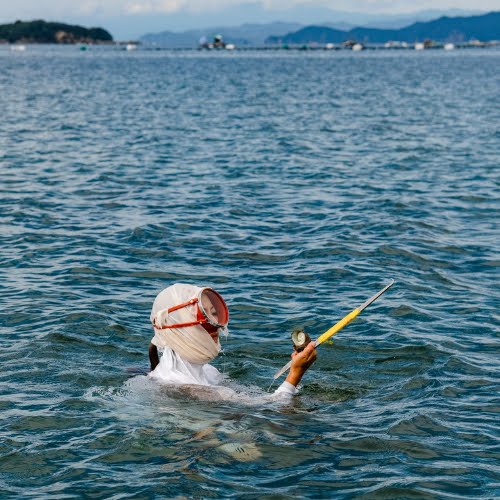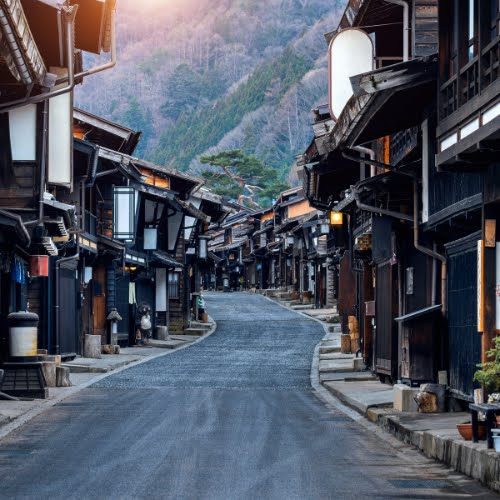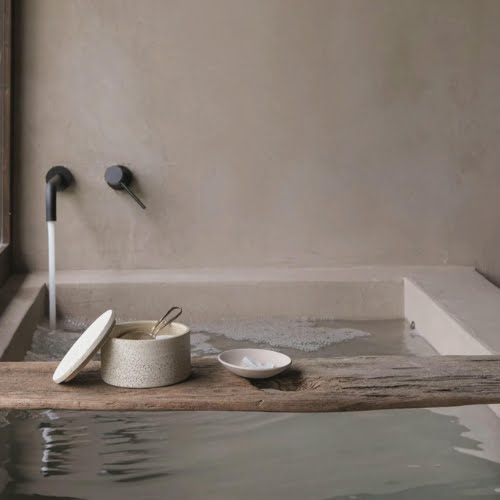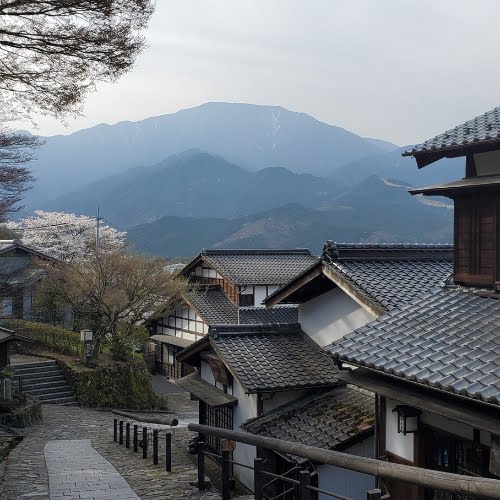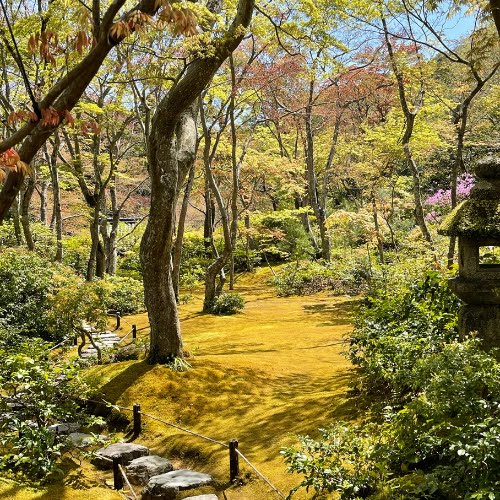
A regular visitor to Japan, Laura George avoids the cherry blossom throngs to explore the country’s more hidden treasures.
Although my mother is Japanese-American, I didn’t visit Japan until I was 40. But then it was love at first sight. Tokyo in all its madness was and is intriguing but the smaller cities and countryside beyond are what ultimately gave birth to a kind of obsession. Now, I find myself almost always in the process of planning a new trip there – in search of art collections in spectacular settings, mossy hiking trails leading to far-off shrines, artisans’ ateliers, untrammelled gardens and, of course, special food experiences. I’m fortunate to have already hit a lot of the major tourist attractions, so the priority now is to keep peeling back layers of the onion and find new ways to immerse myself in Japanese culture.
KYOTO
Lately, I’ve loved spending as much time as possible in Kyoto off-season (as in, not when the cherry blossoms bring impassable throngs of tourists). The pace here is slower, more deliberate than Tokyo. The only city in Japan not to have been flattened by WWII, Kyoto has infinite secrets to unfurl. Make your base in a machiya, an old merchant’s house, anywhere in the city centre and rent a bike to scoot up and down the river between neighbourhoods. There are many listings on Airbnb but be sure to check out Machiya, Shimaya Stays and Maana Homes, too.
Pick up your groceries in Nishiki Market, where the sheer variety of grilled fish, tofus and pickles is mind-blowing: garlic cloves preserved in plum juice and shiso leaves; skewered river fish drenched in sticky teriyaki; croquettes with molten tofu the consistency of hot cream cheese inside. Tofu here is like nothing you’ve ever tasted. It’s as different as hot Bread 41 sourdough is to the anaemic long-life sliced pan you find withering on European supermarket shelves. Seek out yuba, a Kyoto specialty, which is the skin that forms on the top of the pot when the tofu is cooking. Dehydrated and reconstituted, it makes a protein-rich, flavour-absorbing sort of noodle.
If baked goods are your thing, Kyoto has a staggering number of exquisite bakeries and coffee shops per capita. That said, you’ll be hard-pressed to find a flat white before 10am but the relentless attention to detail, process and perfection makes
every sip worth the wait. Wife & Husband, The Good Day Velo, School Bus Coffee Stop and Kitaoji Roastery Lab are just a few to try.
The most visited sites in Kyoto are famous for a reason and will take a couple of days to visit; they are well-covered in all the guidebooks. But there are countless other temples and shrines to discover while walking aimlessly through any neighbourhood. One afternoon we stumbled into the quiet courtyard of Bukk?-ji, a majestic 14th-century temple a stone’s throw from Nishiki that houses not only a stunning place for contemplation but also a beautiful shop, D&Department.
Its collection of objects from master craftspeople and a small organic restaurant specialising in katsu curry is pretty hard to beat.
Just off the beaten track and beyond the confines of the Geisha district of Gion, the renowned potter Kawai Kanjir?’s house sits just as he lived and worked in it a century ago. Like his work, his giant stepped kilns and handmade furniture are one of a kind – and you’ll be virtually alone wandering through them.
Stop by the nearby POJ Studio (Pieces of Japan), for a sublime edit of homewares and a matcha in Maana, the attached
boutique hotel run by a young architectural practice. POJ will happily ship anything you buy back home and it’ll probably
beat you back.
As an alternative to the famous bamboo forest at Arashiyama that is clogged with Instagrammers, go just a bit farther north in the park to the infinitely more tranquil bamboo grove at Adashino Nenbutsu-ji. Don’t miss the easy climb up the hill nearby to Sans? House, a perfect classical home with majestic views over the river on one side and all of Kyoto on the other. While in the neighbourhood, Otagi Nenbutsu-ji, with its moss gardens and collection of 1,200 stone statues is also a great alternative to the famous moss gardens at Kokedera, which have to be booked in writing exactly two weeks in advance, in Japanese.
FURTHER AFIELD
No trip to Japan should be without a stint deep in the countryside to experience the traditional villages, dramatic scenery and hospitality we’ve all been pre-programmed to expect. It’s best done on foot. The Kiso Trail (also called the Nakasendo Way) is an ancient route once used by samurai to travel between Kyoto and Tokyo. It links a series of post towns together and is full of eye candy without being too hard on the knees. Highlights of a three-day journey from Magome to Narai-juku via Tsumago: remote shrines, an elderly man who brews green tea on his open fire for hikers (no charge), waterfalls, suspension bridges, big views, ringing bells to scare away bears and multiple villages straight out of Sh?gun. Punctuate the walking with an overnight or two at Byaku Narai, a craft sake brewery cum luxury inn (ryokan) or a humble but super-friendly hostel like Magome Chaya, where you’ll eat like a king and sleep on a tatami with futon. Hopping on trains between sections of the trail is easily done and luggage can be sent ahead as well via Japan Rail.
The Kumano Kod? area, three hours south of Kyoto, is also rife with well-maintained hiking trails. There are coastal walks, ascents with varying grades of difficulty (tough ones require leaving your next of kin info with the local authorities), open monasteries, mossy cobbled paths up to shrines and a hot onsen bath at the end of a day’s trudge if you plan properly. Centre yourself in Totsukawa and choose where to go from there. Studio Ghibli fans won’t want to miss looking down on the luminescent Doro Kyo Gorge from a height. You can’t put a foot wrong whichever of the many hiking options you choose but the walk along the coastal Iseji route will get all the cobwebs out and simultaneously make you think you’re literally inside a Hiroshige print.
A slight detour south will bring you to Amanemu, a collection of 28 opulent but understated pavilions from the luxurious Aman Resorts overlooking Ago Bay, best known for its female pearl divers. Alongside stately mineral baths, an otherworldly spa is stocked with seasonal herbal concoctions designed to fortify and soothe. A movement coach is also on hand to help rethink posture and gait – a consultation is part walking meditation, part physio. If you’ve ever envied the grace with which Japanese people move, a session is a must.
For a completely different exurban experience in this general area of the country, the Art Islands, Teshima and Naoshima, are like nowhere else on Earth. Thanks to a philanthropic billionaire, these two former toxic waste dumps in the Seto Inland Sea have been transformed into shore-to-shore museums. On Naoshima, you can walk or cycle between plentiful Tadao Ando buildings with works by James Turrell, past Yayoi Kusama installations to dozens of pop-up exhibitions by contemporary artists. There are two standout places to stay here – in the Benesse House Museum itself or at the elegant Roka. On Teshima, perhaps the most breathtaking piece of art is the museum itself designed by Ryue Nishizawa and Rei Naito to house just one piece of art by the latter.
Lastly, an easy rail trip from Tokyo, the Hakone area south of Mount Fuji is home to a world-class outdoor sculpture park, a so-called gyoza museum which serves an exhaustive list of dumplings and an array of ryokan catering to people in need of serious pampering. One of the most famous is G?ra Kadan, which has two beautiful onsen baths that alternate between being male- and female-only at different hours as well as a spa with shiatsu massage masters. Every room has its own
private outdoor onsen and a dining area where guests eat their meals in solitude. It’s the perfect climax to end a journey on. Airport transfers back to Tokyo by car or rail are easily arranged.
WHERE TO EAT
Kyoto is famous for both its elaborate kaiseki set menus and its vegetarian cuisine.
MONK As featured in Chef’s Table, this perfectly formed, intimate spot on the Philosopher’s Path features pizzas made in a stone oven with local ingredients, some foraged in the mountains above. Book two months in advance, restaurant-monk.com.
AWOMB Join a communal table for about ten people in an ancient wooden dining room where you’ll be served a tray with an artfully arranged selection of dozens of pickled and seasoned vegetables, sushi rice and a pile of freshly toasted hand-pressed seaweed (nori) so you can create your own vegan sushi. There’s no wrong way to do it, only opportunities to create
truly memorable bites in an idyllic setting, awomb.com.
MEN-YA INOICHI The queue starts forming well before it opens at 11am (but moves fast) and remains a block-long right up until the noodles sell out around 1pm because the ramen here is off the charts. The antique store a few doors up, Candy Joy, is full of treasures so you can kill time there if someone will hold your place in line, inoichi.stores.jp.
SANSHI An immaculate nine-seater omakase sushi bar in Gion run by a couple with great English. Drop in to book in person, sushisanshi.com.
TO WATCH AND READ
Get culturally caught up ahead of your trip.
The Makanai: Cooking for the Maiko House is a Netflix series about a modern Geisha house. Another Kyoto by Alex Kerr offers a deep dive into the culture, history and architectural traditions of the city. Diane Durston’s Old Kyoto is one of the best guidebooks ever produced on any city’s shopping and eating. Sushi and Beyond by Michael Booth is part family travelogue, part food history and well worth picking up.
This article originally appeared in the Winter 2024 issue of IMAGE.
Find IMAGE Spring in stores, or click here to buy online. Have you thought about becoming an IMAGE subscriber? Our Print & Digital Magazine subscribers receive all four issues of IMAGE Magazine and two issues of IMAGE Interiors directly to their door along with digital access to all digital magazines and our full digital archive plus a gorgeous welcome gift worth €75 from Max Benjamin. Visit here to find out more about our IMAGE subscription packages.



